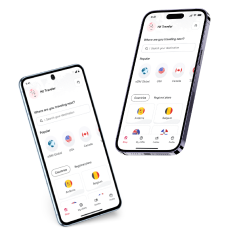Best 15 apps for your Japan trip
Heading to Japan? These must-have travel apps tackle translations, map out routes, and provide local insights — letting you experience Japan like you’ve been there before!
Japan offers a lineup of incredible experiences — from wandering Tokyo’s lively streets to finding peace in Kyoto’s temples or sampling Osaka’s famous street food.
But, Japanese is predominantly spoken, and English signage and translations can be limited.
That’s why we’ve rounded up the best travel apps based on their pros, cons, pricing, and system availability.
These apps handle translations, routes, and local tips so you can visit Japan confidently and make the most of every moment.
Here’s a quick overview:
| App | Best for | Price |
| Google Maps | Real-time navigation for public transit, driving, and walking | Free |
| Google Translate | Quick translations via text, voice, or camera | Free |
| Japan Travel by NAVITIME | Route planning and transit information | Free (with in-app purchases) |
| Maps.me | Offline navigation with maps and points of interest | Free; Pro plan $4/month or $38/year |
| NERV Disaster Prevention App | Real-time alerts for natural disasters | Free |
| Holafly eSIM | Reliable internet connection across Japan | Reaching as low as $6.90 per day |
| Suica card | Cashless payments for transit and purchases | Initial cost: ¥2,000 (~$12.92 USD) |
| Uber | Taxi and ride-hailing in urban areas | ¥400 (~$2.58) booking fee + ride fare |
| GO Taxi | Taxi reservations with cashless payments | Varies (avg. ¥900-5,000 or ~$5.82-$32.31 ) |
| Tokyo Subway Navigation | Offline subway navigation in Tokyo | Free |
| Klook | Booking tours, activities, and attraction tickets | Free; activity costs vary |
| Japan2Go! | Discover tourist spots and free WiFi | Free |
| RamenBeast | Discover top ramen shops across Tokyo | Free (iOS only) |
| Uber Eats | Food delivery from local restaurants | Free app; service/delivery fees apply |
| GuruNavi | Restaurant search with discounts and reservations | Free |
Best apps for Japan travel
These Japan travel apps cover everything you need for a smooth adventure, from navigation and translation to insider tips.
1. Google Maps
With detailed maps, walking directions, real-time traffic, and public transportation options, Google Maps is the best travel app for Japan to find everything from local attractions to hidden restaurants.
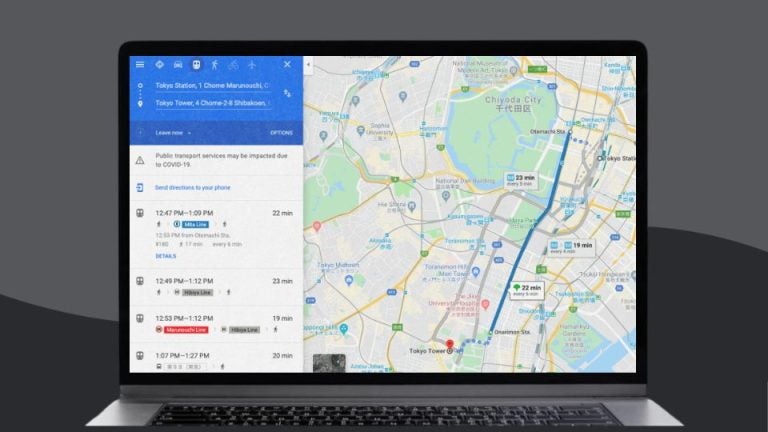
Pros:
- Provides detailed train itineraries and times
- Provides estimated toll prices for routes in Japan
- Supports offline use by downloading maps in advance
- Includes detailed information on restaurants, businesses, and tourist attractions
- Integrates AI features like Gemini for more natural interactions and improved discovery
Cons:
- Google Maps often suggests Nozomi Shinkansen routes, which are the fastest but are not covered by the Japan Rail (JR) Pass. This can confuse JR Pass holders who must stick to the Hikari or Kodama trains. If this is your first trip, you may need to filter out Nozomi routes manually or rely on apps like NAVITIME that offer JR Pass-specific route options.
Price:
- Free
System availability:
- Accessible via web browsers
- Available on both iOS and Android devices
2. Google Translate
Google Translate is another must-have Japanese to English translator app. It helps you bridge the language gap in Japan with real-time translation for text, speech, and images.
Just type, speak, or point your camera at Japanese text for immediate results — perfect for reading signs, menus, and more.
Plus, you can download the Japanese language pack for offline use, so you’re covered even without WiFi.
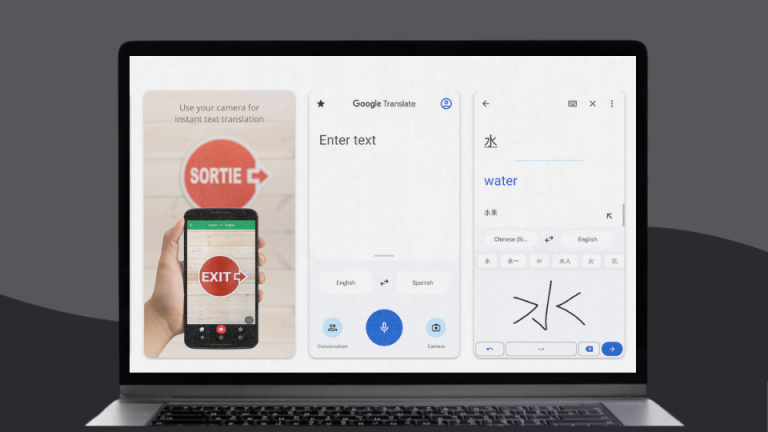
Pros:
- Supports over 100 languages for text translation
- Offers real-time voice translation for conversations
- Constantly improving accuracy through machine learning
- Provides image translation using your phone camera or uploaded photos
Cons:
- Struggles with context-dependent meanings and nuances in Japanese
- Has difficulty with specialized vocabulary and can make poor word choices
Price:
- Free
System availability:
- Mobile apps for iOS and Android devices
- Available as a web service on desktop browsers
3. Japan Travel by NAVITIME
Japan Travel by NAVITIME is a super handy Japan transportation app that helps you navigate the transit system with ease.
It offers route planning for trains, buses, and flights, with real-time updates, train delays, and offline maps. You’ll also find the best route, suggested itineraries, WiFi locations, and area guides.
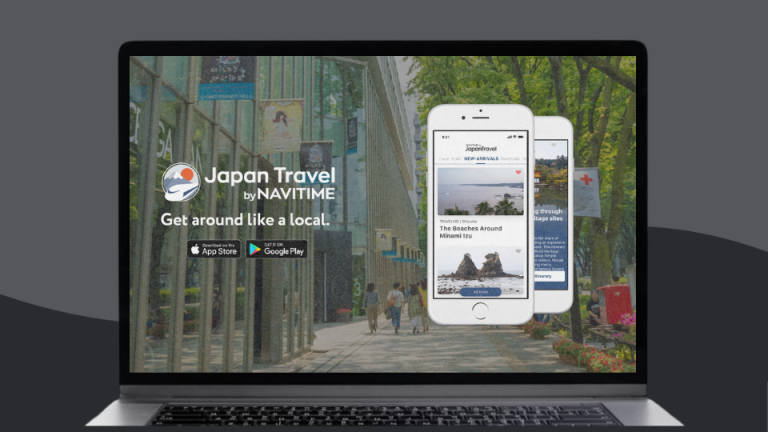
Pros:
- Provides offline maps and WiFi spot search
- Available in multiple languages, including English
- Includes features like trip planning and model itineraries
- Offers route search, transit information, and destination guides
Cons:
- May not always show the cheapest route options
- Premium features — like route search with added stops, Japan-wide public transit timetables, multiple tourist pass options, and voice navigation — require a paid subscription
Price:
- Free
- 30-Day Ticket: ¥2,200 (~$14)
- 90-Day Ticket: ¥4,500 (~$29)
- 365-Day Ticket: ¥15,000 (~$97)
System availability:
- Available for both iOS and Android devices
4. Maps.me
Maps.me gives you offline access to detailed maps and navigation without using data.
Download maps before your trip, and you’ll have walking directions, points of interest, and bookmarks on hand — even without the internet.
This app is perfect for exploring Japan’s less connected areas while saving on data costs, with features like turn-by-turn navigation and offline search.
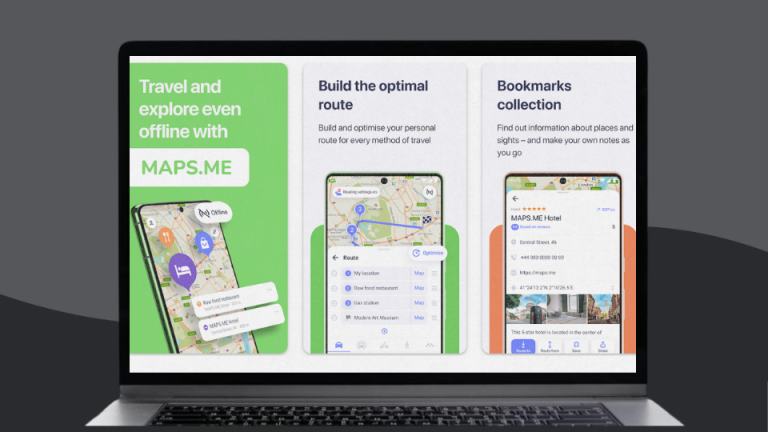
Pros:
- You can bookmark locations and share them with friends
- Works without an internet connection, saving on data usage
- Includes detailed information on points of interest and hiking trails
Cons:
- As of 2025, the free version is limited to downloading only 10 map regions
- Some Redditors recommend using organic maps, an open-source version of Maps.me, which acts exactly like Maps.me and includes premium features for free
Price:
- Free
- Pro version comes with a 3-day free trial and costs ~$4 USD per month or ~$38 USD per year
System availability:
- Available for both iOS and Android devices
5. NERV Disaster Prevention App
The NERV Disaster Prevention App, developed by Gehirn, Inc., provides real-time alerts for earthquakes, tsunamis, and severe weather in Japan.
It offers timely information to help you stay safe during emergencies.
The app also includes features like rain cloud radar and weather forecasts, making it a valuable tool for both residents and travelers.
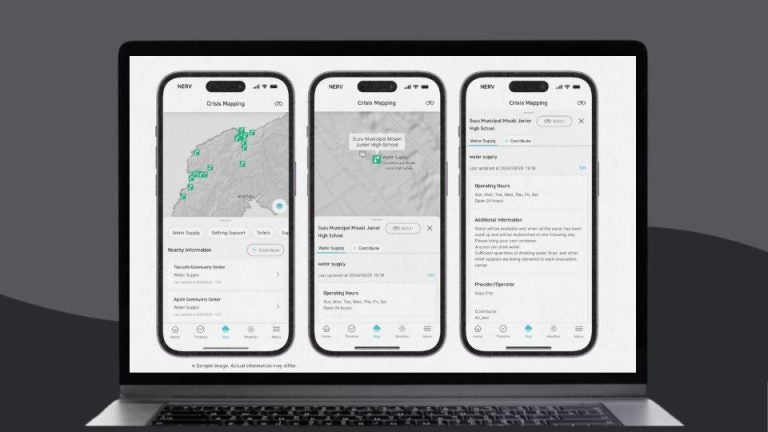
Pros:
- Available in English, making it accessible for many foreign travelers
- Provides real-time notifications for earthquakes, typhoons, floods, and other natural disasters
- Sends push notifications of nearby earthquakes, giving users some time to prepare
Cons:
- The app requires a stable internet connection to function properly
- As with many location-based apps that run in the background, NERV may consume more battery power than usual, especially when providing real-time updates
Price:
- Free
System availability:
- Available for both iOS and Android devices
| 💡 Will your phone work in Japan? Check if your device supports the local bands and frequencies by reading our guide on how to check if your cell phone works in Japan. |
Japan internet and eSIM apps
You’ll need a reliable internet connection to use these apps for real-time updates, navigation, and translations.
These internet and eSIM options keep you connected across Japan, giving you instant access to directions, alerts, and schedules as you explore.
| 💡 Need mobile internet in Japan? Stay connected with reliable internet throughout your trip. From eSIMs to public WiFi options, discover everything you need in our detailed guide on mobile internet options in Japan. |
6. Holafly
Holafly offers eSIMs for over 200 destinations, including an eSIM for Japan, so you can stay connected wherever you go.
Buy and set up your eSIM before departure, then activate it as soon as you land in Japan for instant access. Installation is simple — just scan a QR code sent by email, which usually takes around five minutes. You can also opt for manual set-up.
With Holafly’s Japan plan, you get unlimited data, plus 500 MB per day for hotspot sharing to other devices.
If you’re traveling across countries, opt for regional plans like the best eSIM for Asia travel to skip the hassle of switching plans at each border.
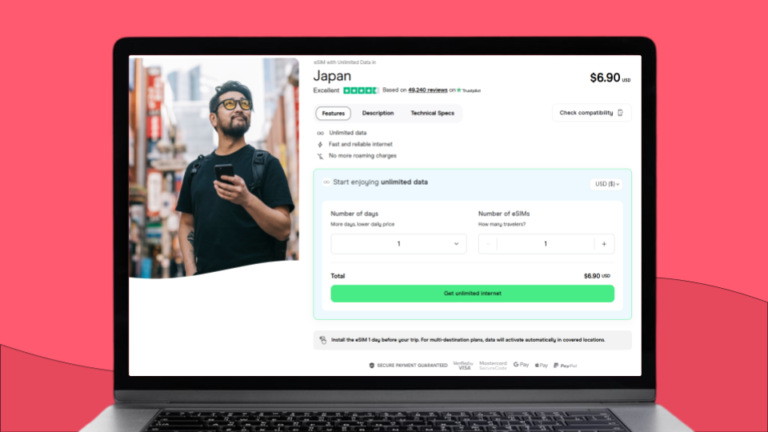
Pros:
- Offers unlimited data plans
- Keeps your WhatsApp number active
- Customizable plans to match your stay from day 1 to 90
- 24/7 customer support in multiple languages, including English and Japanese
Cons:
- Doesn’t include calls or SMS, but you can keep your regular number for internet-based calls and messaging apps like WhatsApp
- Not compatible with some older devices; however, most newer models support eSIM. You can check Holafly’s eSIM-compatible phones list.
Price:
- Customizable plans based on your chosen duration, from $6.90 for one day to $139.90 for 90 days, with rates as low as $1.55 per day.
System availability:
7. Suica card
The Suica card, from JR East, is a rechargeable smart card that makes getting around on Japan’s trains, buses, and subways easy and cash-free.
You can also use it to pay at convenience stores, vending machines, and shops that display the Suica logo.
As a tourist, you can get the Welcome Suica card, a deposit-free version valid for 28 days. Sales are typically limited to one card per person.
To buy one, you need to show your passport with a temporary visitor visa at major JR East stations or airports. Welcome Suica (the tourist version) is available at select airports and major stations including:
- Haneda Airport Terminal 3 Station
- JR East Travel Service Centers at Narita Airport Terminal Stations 1 and 2·3
- Select major JR East stations in Tokyo, including Tokyo Station, Ueno Station, Ikebukuro Station, Shibuya Station, and Shinagawa Station
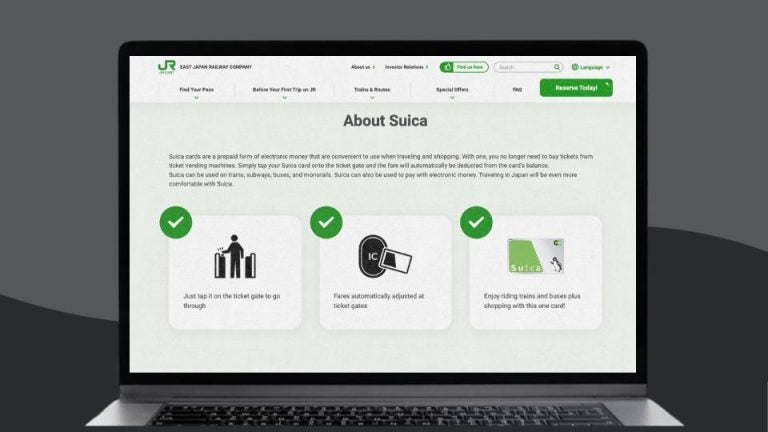
Pros:
- No need to buy individual tickets for each journey
- Convenient for public transportation and shopping
- Available as a physical card or digital version for smartphones
- Can be used across Japan as part of the Nationwide Mutual Usage Service
Cons:
- Physical cards can only be reloaded with cash
- Refunds may not be available for tourist versions
- Tourist versions (Welcome Suica) expire after 28 days
Price:
- Maximum balance: ¥20,000 (~$134.00)
- Initial cost: ¥2,000 (~$13.40) (includes ¥500 (~$3.35) deposit and ¥1,500 (~$10.05) usable balance)
- Can be charged in increments of ¥500 (~$3.35), ¥1,000 (~$6.70), ¥2,000 (~$13.40), ¥3,000 (~$20.10), ¥4,000 (~$26.80), ¥5,000 (~$33.50), and ¥10,000 (~$67.00).
System availability:
- Digital version can be added to Apple Wallet on iPhones
- Available at JR East train stations and ticket vending machines
| 💡 Make traveling in Japan easy with a tourist card. Tourist cards like the Welcome Suica can save you time and effort while navigating Japan’s public transportation. Learn more in our guide about how tourist cards work and where to get them in Japan. |
Japan transportation apps
Get around Japan with ease using the best Japan transportation apps. Whether you’re navigating by subway or catching a taxi, these apps ensure you stay on track.
8. Uber
Is there Uber in Japan? Yes! Uber connects you with licensed taxi drivers for most rides, not an individual driver like in the U.S.
However, you can also book rides with personal vehicles in some areas, like Tokyo and Kyoto. This means more ride options, especially in busy cities and tourist spots where taxis can be hard to find.
Currently, Uber is available in parts of Tokyo, Kyoto, Kanagawa, and Aichi prefectures, with more locations planned.
You’ll find options like standard taxis, luxury vehicles (such as the Toyota Alphard), and even Tesla Model Ys in some areas.
Fares may be higher due to booking fees, but Uber remains a convenient, English-friendly option in Japan’s busiest areas.
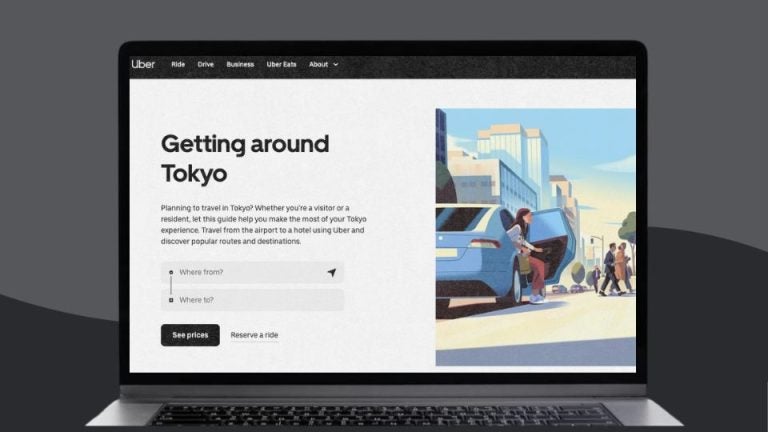
Pros:
- Option for cashless payments
- Friendly and professional drivers
- Can be used with a non-Japanese phone number and credit card
- Convenient for non-Japanese speakers due to the app’s multiple language options
Cons:
- Requires internet connection to use
- Generally more expensive than public transportation
Price:
According to a Reddit thread, Uber typically charges a ¥400 (~$2.70) booking fee in addition to the fare. The same thread also states that a 20-minute ride often costs between ¥8,000-10,000 (~$54-$68).
System availability:
- Accessible through the mobile app for iOS and Android devices
9. GO Taxi
GO Taxi is a widely used Japan taxi app for foreigners, serving 45 out of 47 prefectures including major tourist areas like Hokkaido, Tokyo, Kyoto, Osaka, Fukuoka, and Okinawa.
The app offers real-time tracking, fare estimates, and cashless payment options, making it a convenient choice for both locals and tourists. GO Taxi supports international travelers in multiple languages, including English.
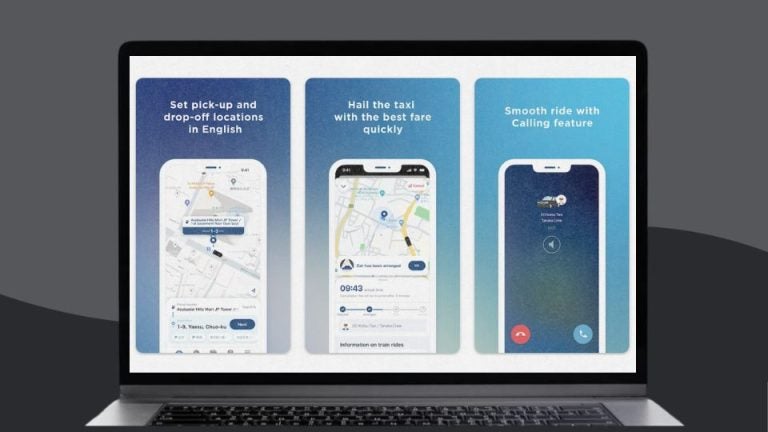
Pros:
- Reservation feature available
- Cashless payment option (GO Pay)
- Easy-to-use app interface in English
- Airport flat-rate fares for some routes
- Can be used with non-Japanese phone numbers
Cons:
- Requires internet connection to use
Price:
Most GO Taxi rides cost between ¥900 (~$6) to ¥5000 (~$33), with an average of about 1200¥(~$8) for shorter trips, while reservations may cost an extra fee of about ¥1000 (~$7).
System availability:
- Available on both iOS and Android devices
10. Tokyo Subway Navigation
The Tokyo Subway Navigation app, developed by Tokyo Metro, is your go-to tool for navigating Tokyo’s extensive subway system.
It offers an interactive map covering Tokyo Metro, Toei lines, and the JR Yamanote line, allowing you to plan routes, check journey times, and view transfer information.
The app functions offline, so you can access maps and plan routes without an internet connection. Tokyo Subway Navigation caters to international travelers and is available in multiple languages, including English and Japanese.
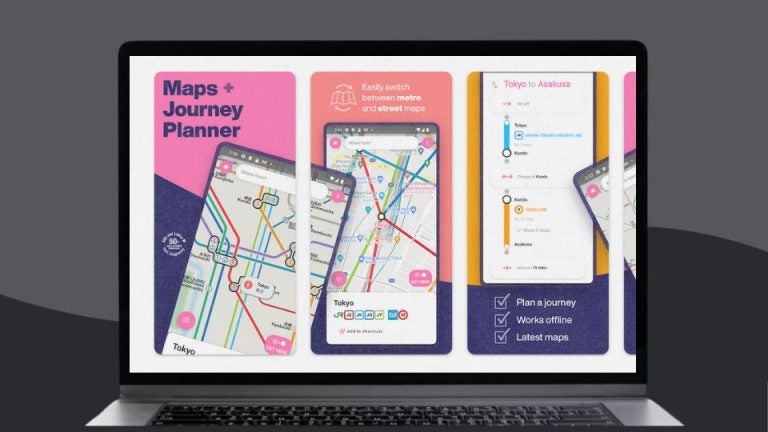
Pros:
- Can be used offline
- Shows which stations offer free WiFi
- Guides users to the best exit for nearby tourist spots
- Displays main routes, time required, and fares in an easy-to-understand format
- Supports multiple languages: English, Chinese (Simplified & Traditional), Korean, Thai, and Japanese
Cons:
- Search is based on average ride time, which may vary from actual timetables
- Fares and transfer information only relevant to Tokyo Metro and Toei Subway lines
Price:
- Free
System availability:
- Android OS 4 and above
- iOS (available in the App Store)
| 💡Ready for your trip? It’s time to start creating an itinerary. Check out our Japan travel guide! |
Activity and booking apps
Plan your Japan adventures with these top activity and booking apps. From tickets to guided tours, these tools make it easy to reserve activities and skip the lines.
11. Klook
Klook is a travel booking platform that offers a wide range of activities, tours, and attractions across Japan.
You can book experiences like Mount Fuji tours, Kyoto cultural activities, and Tokyo Disneyland tickets directly through the app.
Klook often provides discounted rates and exclusive deals, helping you save on your travel expenses. The app supports multiple languages, including English and Japanese, and offers instant confirmation for many bookings.
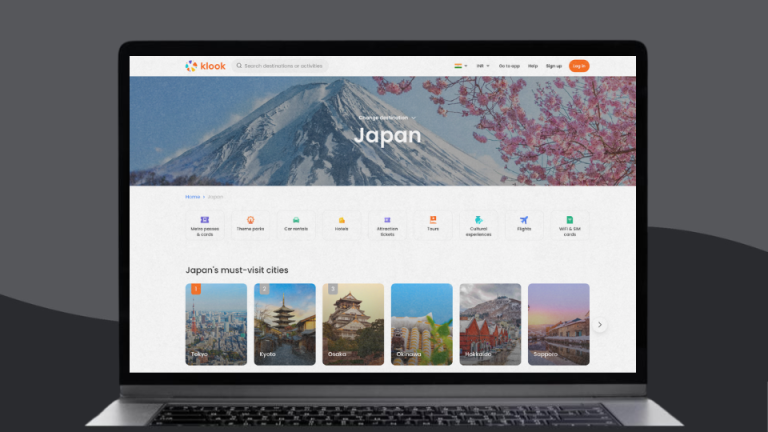
Pros:
- Offers discounted rates and package deals
- Easy booking management with all passes and tickets stored in one place
- Earn points on bookings, which can be redeemed for future travel experiences
Cons:
According to some Reddit threads:
- For some services like Shinkansen tickets, users can’t choose specific seats
- Users report difficulties in contacting customer service and resolving problems
- Bookings not confirmed or tickets not available despite successful purchases
Price:
- Free — no service fees or additional fees
System availability:
Can be downloaded from iOS App Store and Google Play Store
| 👋 Planning a trip to Japan? Make sure to brush up on local etiquette and avoid common pitfalls. Check out our guide on things not to do in Japan. |
12. Japan2Go!
Japan2Go! is a multilingual travel app designed to enhance your experience in Japan. It offers detailed information on over 130,000 tourist destinations, including cultural sites, restaurants, and attractions.
The app provides various search methods, such as list and map searches, to help you find spots of interest. It also connects you to 400,000 free WiFi spots nationwide.
However, some public WiFi services in Japan may have time restrictions. For example, Osaka Free WiFi requires you to sign in every 30 minutes, while Osaka Free WiFi Lite limits you to four 15-minute sessions per day.
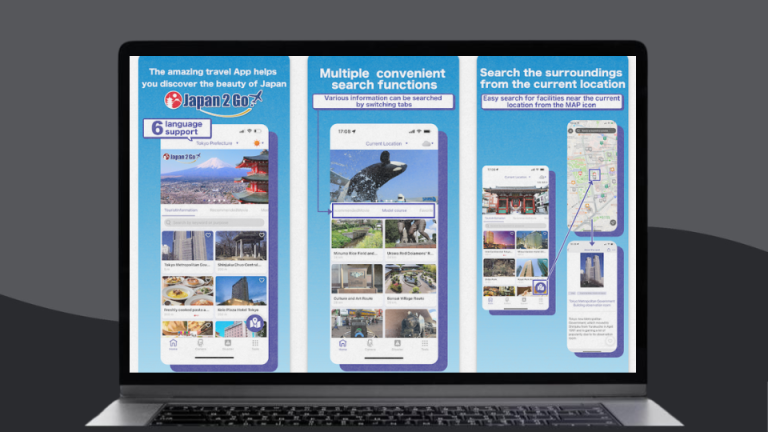
Pros:
- Provides currency conversion tools
- Linked to a database of 130,000 tourist destinations throughout Japan
- Offers AR photo opportunities with Japan-specific characters and mascots
- Includes location-based search for nearby attractions, restaurants, and WiFi spots
Cons:
- Requires iOS 14.0 or later for iPhone compatibility
- Only supports six languages — Japanese, Thai, Simplified Chinese, Traditional Chinese, English, and Korean
Price:
- Free
System availability:
- Available for both iPhone and Android devices
Food and restaurant apps
Discover Japan’s vibrant food scene with these restaurant apps. Whether you love ramen and sushi or want to explore unique local spots, you can find, reserve, and enjoy the best dining experiences Japan has to offer.
13. RamenBeast
RamenBeast is an iOS app that guides you to Japan’s top ramen shops, curated by experts who have sampled over 10,000 bowls.
It features detailed reviews, shop specialties, and ordering tips, helping you find authentic ramen experiences.
The app covers more than 700 ramen shops in Tokyo, categorized by styles like tonkotsu, tsukemen, and spicy varieties.
Each listing includes essential details such as address, hours, and recommended dishes.
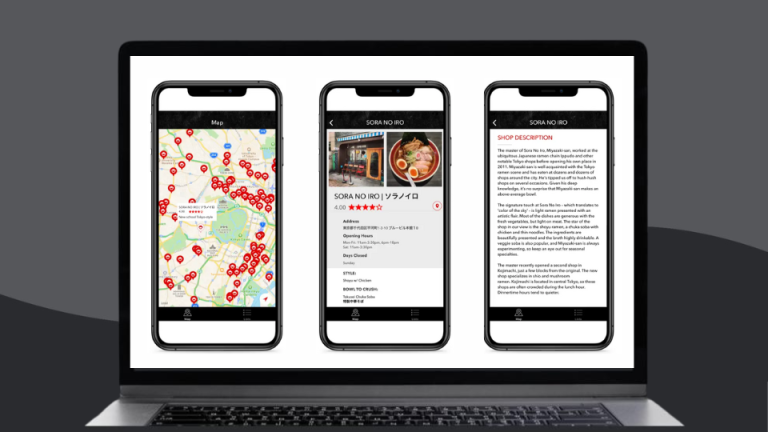
Pros:
- Provides recommendations in both English and Japanese
- Search by categories like Tokyo’s Top 50, Tonkotsu, Late-Night, Tsukemen, etc.
- Created by ramen enthusiasts who have eaten over 10,000 bowls of ramen to curate the listings
Cons:
- Primarily focused on Tokyo
- Not available for Android devices
Price:
- Free
System availability:
- Available for iPhone (iOS 15.4 or later)
- Compatible with iPod touch (iOS 15.4 or later)
- Compatible with Apple Vision (vision OS 1.0 or later)
- Works on Mac computers with Apple M1 chip or later (macOS 12.3 or later)
| ✈️ Exploring Japan on your own? Check out our guide on solo travel in Japan for insider advice, top spots, and safety tips tailored just for you. |
14. Uber Eats
Uber Eats lets you enjoy Japan’s diverse food scene right from your accommodation. With a wide selection of local restaurants, you can order sushi, ramen, or international dishes with just a few taps on the app.
Uber Eats includes real-time tracking and multiple payment options, making it a convenient choice in cities like Tokyo, Osaka, and Kyoto.

Pros:
- Easy-to-use app interface
- Available in major cities like Tokyo
- Ability to track your order in real-time
- Convenient food delivery from a variety of restaurants
Cons:
- Potential for long wait times during busy periods
- Higher prices compared to dining in at restaurants
Price:
- Free
- Customers pay for their food orders plus additional fees like service fee, delivery fee (which can vary based on distance and demand), and optional tip (though tipping is not customary in Japan)
System availability:
- Accessible via web browser on computers
- Available on iOS and Android mobile devices
15. GuruNavi
GuruNavi, short for “Gourmet Navigator,” is Japan’s top restaurant guide with information on over 65,000 dining spots. Search by location, cuisine, or budget, and get detailed menus, photos, and user reviews.
The app also offers discount coupons and reservation options, making it easy to explore Japan’s dining scene.
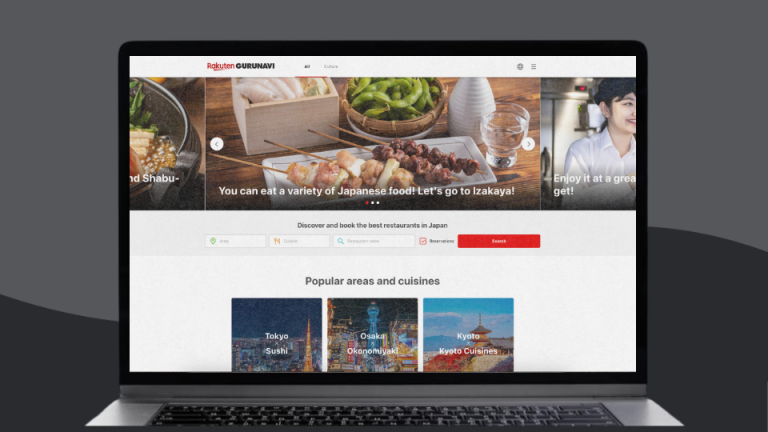
Pros:
- Offers a free restaurant booking service in English
- Provides access to a wide range of restaurants across Japan
- Provides nearby restaurant recommendations based on user location
Cons:
- Some users may need to make international calls to use the booking service, which could incur additional charges
Price:
- Free
System availability:
- Available for iOS and Android devices
| 💡 eSIM or Pocket WiFi? Wondering which is better for staying connected in Japan? Compare the pros and cons of eSIMs vs Pocket WiFi in Japan to find the best option for your trip. |
Map it, book it, love it: Apps for every Japan trip
Traveling in Japan is a unique adventure, but the language barrier, complex transit, and fast-paced cities can feel overwhelming to some travelers. With the right apps, you can navigate like a pro, find amazing food, and access top sights easily.
Tools like Google Maps, NAVITIME, and RamenBeast simplify everything — from directions to dining — making your trip smoother and more memorable.
To make these apps work at their best, you need a strong internet connection – and lots of data! Holafly’s unlimited data eSIM is a great option.
You can easily set up your eSIM before you travel and activate your plan as soon as you land, and with regional plans tailored for you, Holafly ensures you stay connected without worrying about swapping SIM cards and plans.





 Language
Language 


















 No results found
No results found

